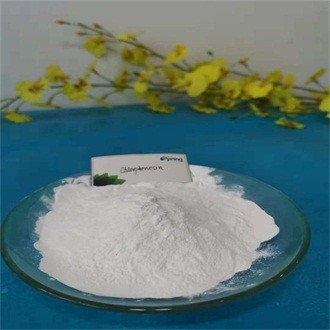When it comes to reducing the smell of chlorphenesin using technical means, there are several approaches that can be employed. Here are some methods that can help mitigate the odor of chlorphenesin:
Adsorption: Adsorption is a commonly used method to reduce odors. Activated carbon or other odor-absorbing materials can be utilized to trap and remove volatile odor compounds. This can be achieved by incorporating activated carbon filters or absorbent materials within the production process or packaging of chlorphenesin products. These materials can effectively capture and neutralize the odor molecules, resulting in a reduction of the overall smell.
Chemical modification: Chemical modification of chlorphenesin can be explored to alter its odor profile. This can be achieved by introducing functional groups or side chains to the molecule, which can change its chemical properties and potentially reduce or mask the unpleasant odor. However, it is important to ensure that the modified compound remains effective as an active ingredient and complies with regulatory guidelines.
Encapsulation: Encapsulation techniques can also be employed to reduce the odor of chlorphenesin. By encapsulating chlorphenesin within a protective shell, such as microcapsules or nanoparticles, the release of volatile odor compounds can be controlled. This helps in reducing the perception of the odor, as the encapsulation barrier prevents direct contact of chlorphenesin with the surrounding environment.
Formulation optimization: Adjusting the formulation of chlorphenesin products can help reduce its odor. By carefully selecting and optimizing the combination of ingredients, such as solvents, emulsifiers, and co-solvents, it is possible to minimize the release and perception of odor compounds. Formulation adjustments can also include optimizing pH, as certain pH ranges can impact the volatility and odor intensity of chlorphenesin.
Quality control: Implementing stringent quality control measures during the manufacturing process can help ensure that the chlorphenesin products are free from any impurities or contaminants that may contribute to the odor. Proper purification techniques, thorough testing, and adherence to good manufacturing practices (GMP) can help maintain product quality and minimize any potential odor-related issues.
It is important to note that while technical means can help reduce the smell of chlorphenesin, it is essential to maintain the effectiveness of the compound as an active ingredient. Any modifications or optimizations should be conducted within regulatory guidelines and safety considerations to ensure product safety and efficacy.
Post time: Jun-07-2023


